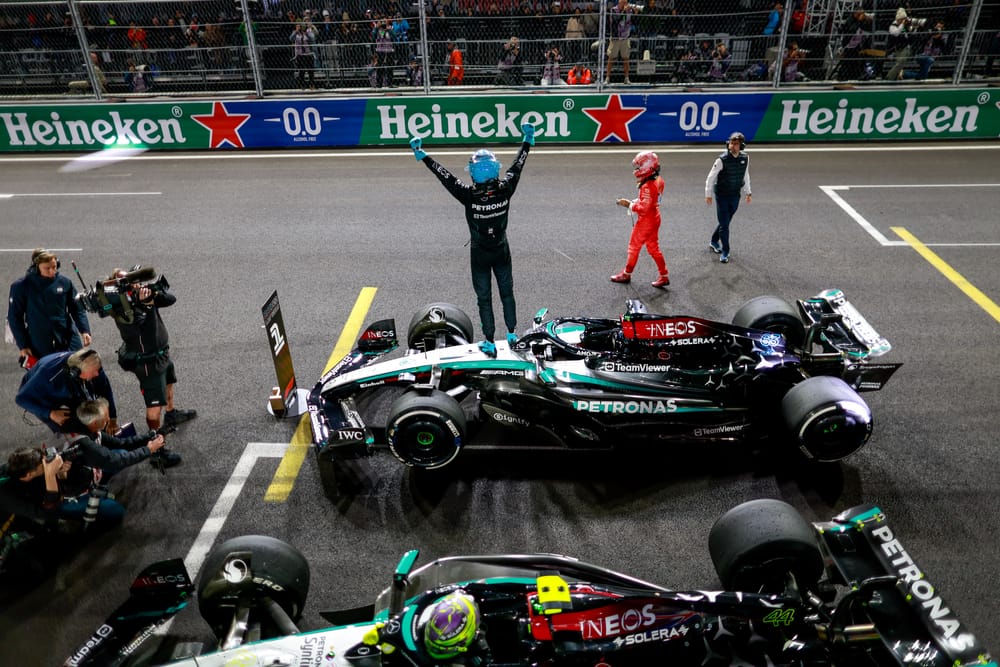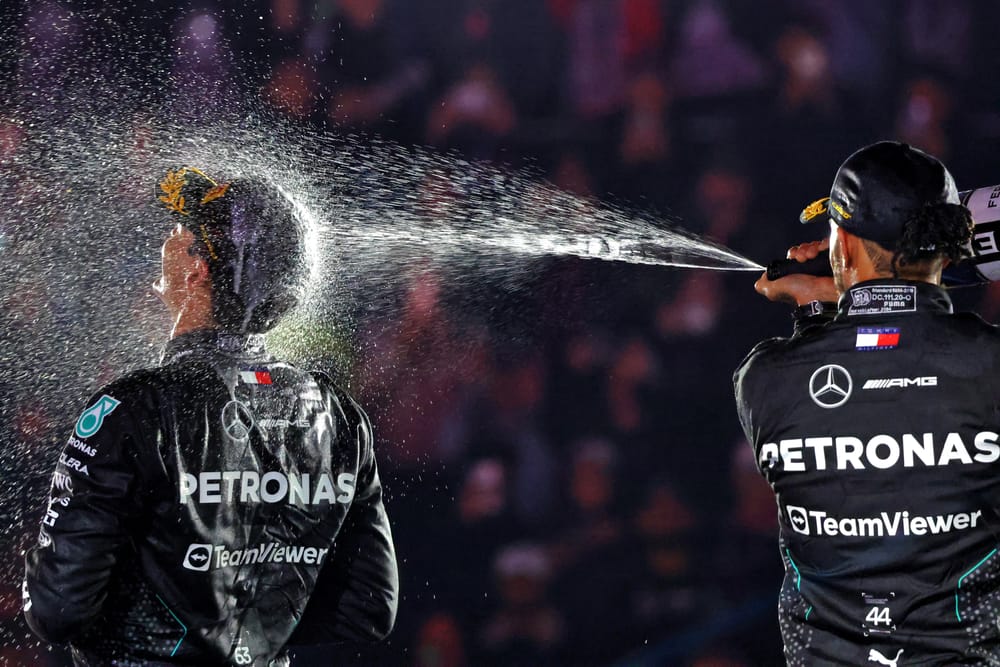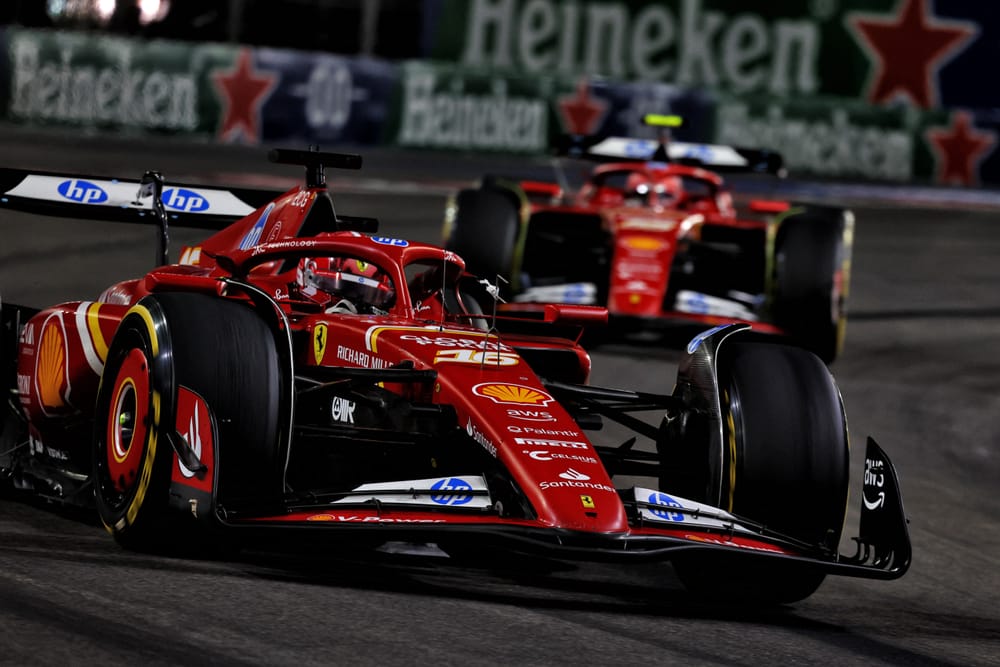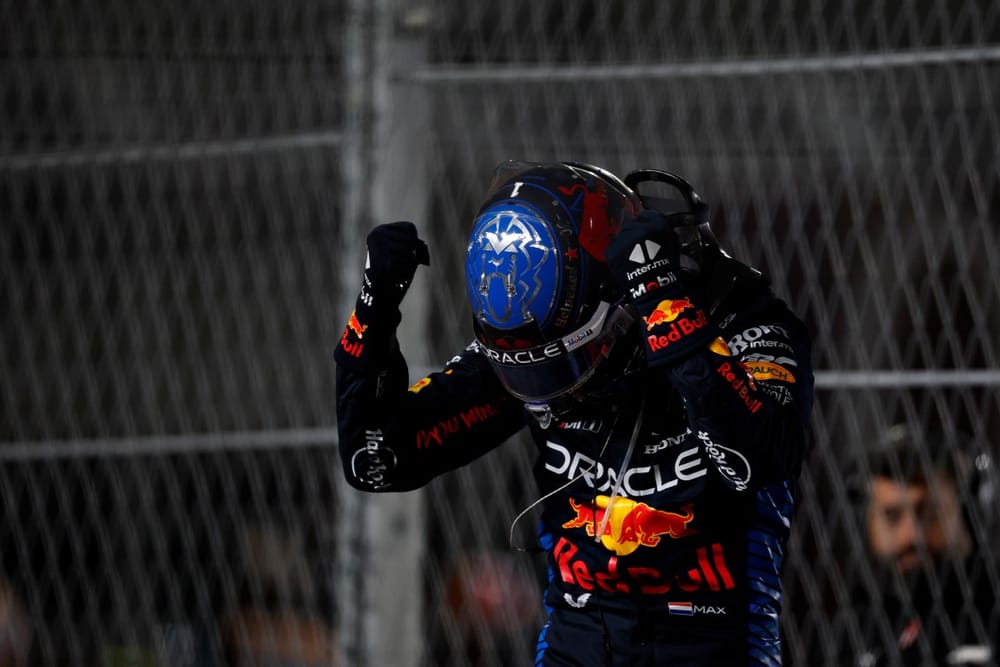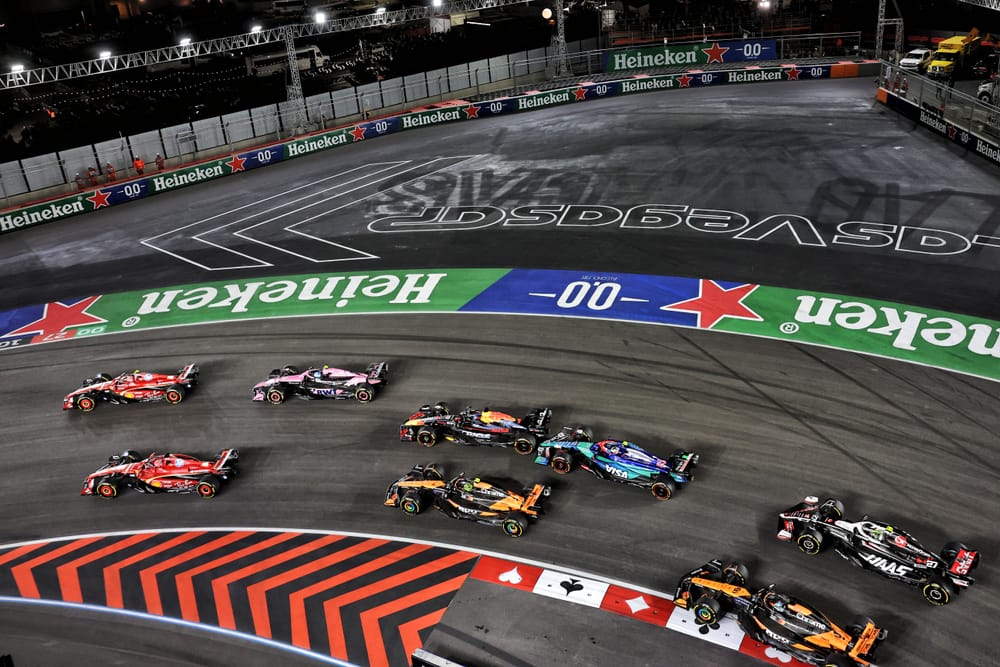Up Next

Amid the two hard points of Max Verstappen clinching a thoroughly deserved fourth Formula 1 world title and George Russell delivering a dominant victory from pole, there was a period of ambiguity in the Las Vegas Grand Prix’s shape.
As it hovered between a one-stop and a two in the early stages, so Ferrari fell through the cracks – thereby freeing Russell to dominate and for Lewis Hamilton to come charging through from 10th for a Mercedes 1-2.
Verstappen, in a Red Bull with an unsuitable rear wing, had the discipline to keep himself out of getting tangled in either the Mercedes or Ferrari drivers’ races.
McLaren meanwhile had possibly its least competitive race of the season, the car’s speed glimpsed only fleetingly throughout the weekend, thereby making Verstappen’s mission easier as he was never under serious threat from Lando Norris.
The underlying story was that the Mercedes had dominant speed here. So much speed that it could give its tyres an easier time than anyone. We saw in qualifying how its ability to generate instant tyre temperature was decisive in Russell’s pole. But its performance on race day was about much more than the track position that bought. Against expectations, it was way faster in race conditions than Ferrari, and its tyre performance was much more robust.
We’ll get into why that might have been after a recap of the race’s shape.
One-stop or two-stop?
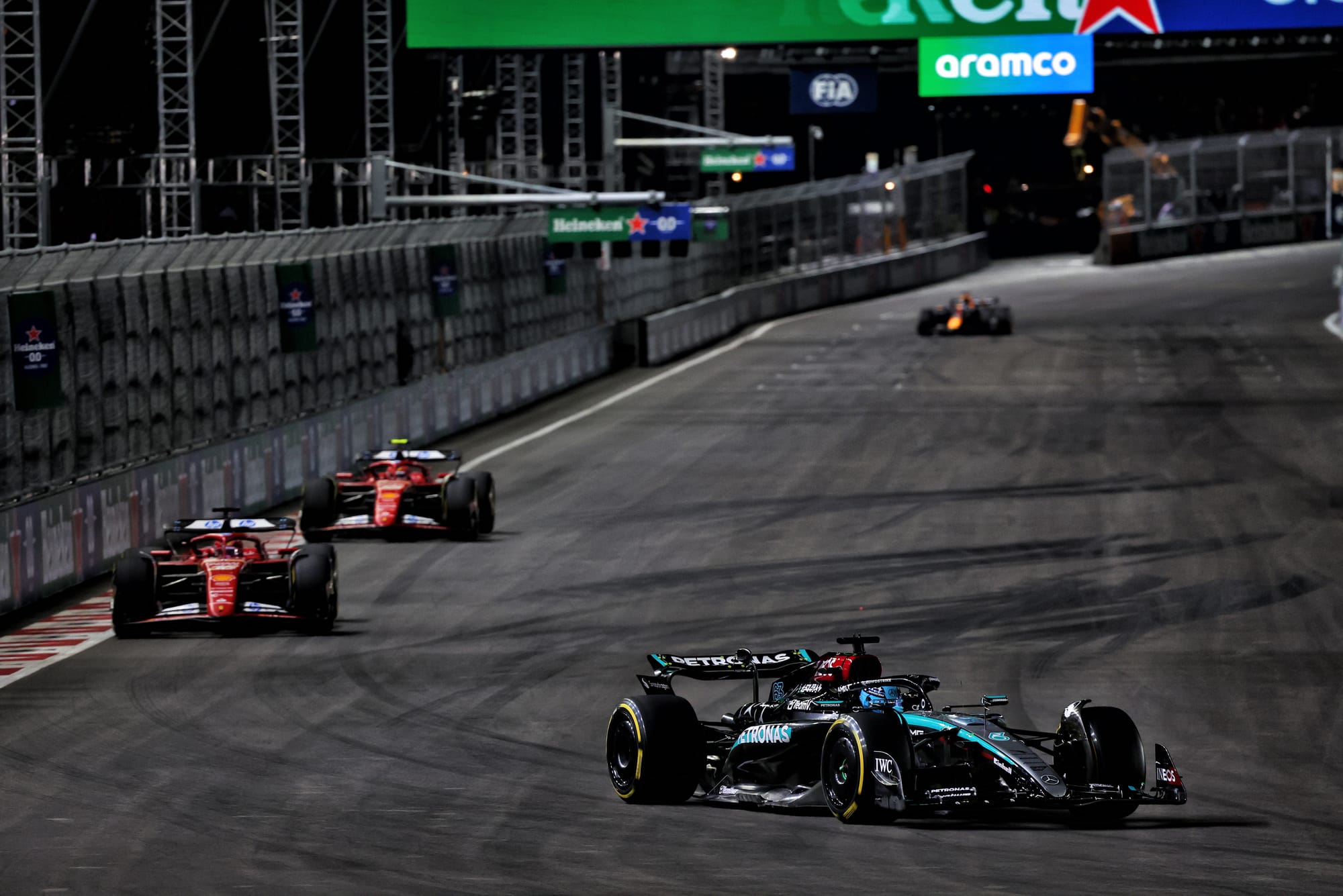
The straightforward one stop which had been the expected preferred strategy wasn’t going to be playing out as, one after another, drivers found that their right-front mediums were graining up far earlier than expected.
This ambiguous period was as early as laps seven to nine.
Charles Leclerc’s fluctuating speed was the first thing to flag it up. He’d made a great start from fourth, straight past Pierre Gasly’s Alpine off the line and then inside of team-mate Carlos Sainz into the first turn. Only Russell was ahead – and the Ferrari with its super-low rear wing – was faster at the end of that long back straight and looking like it might allow Leclerc to pass the Mercedes.
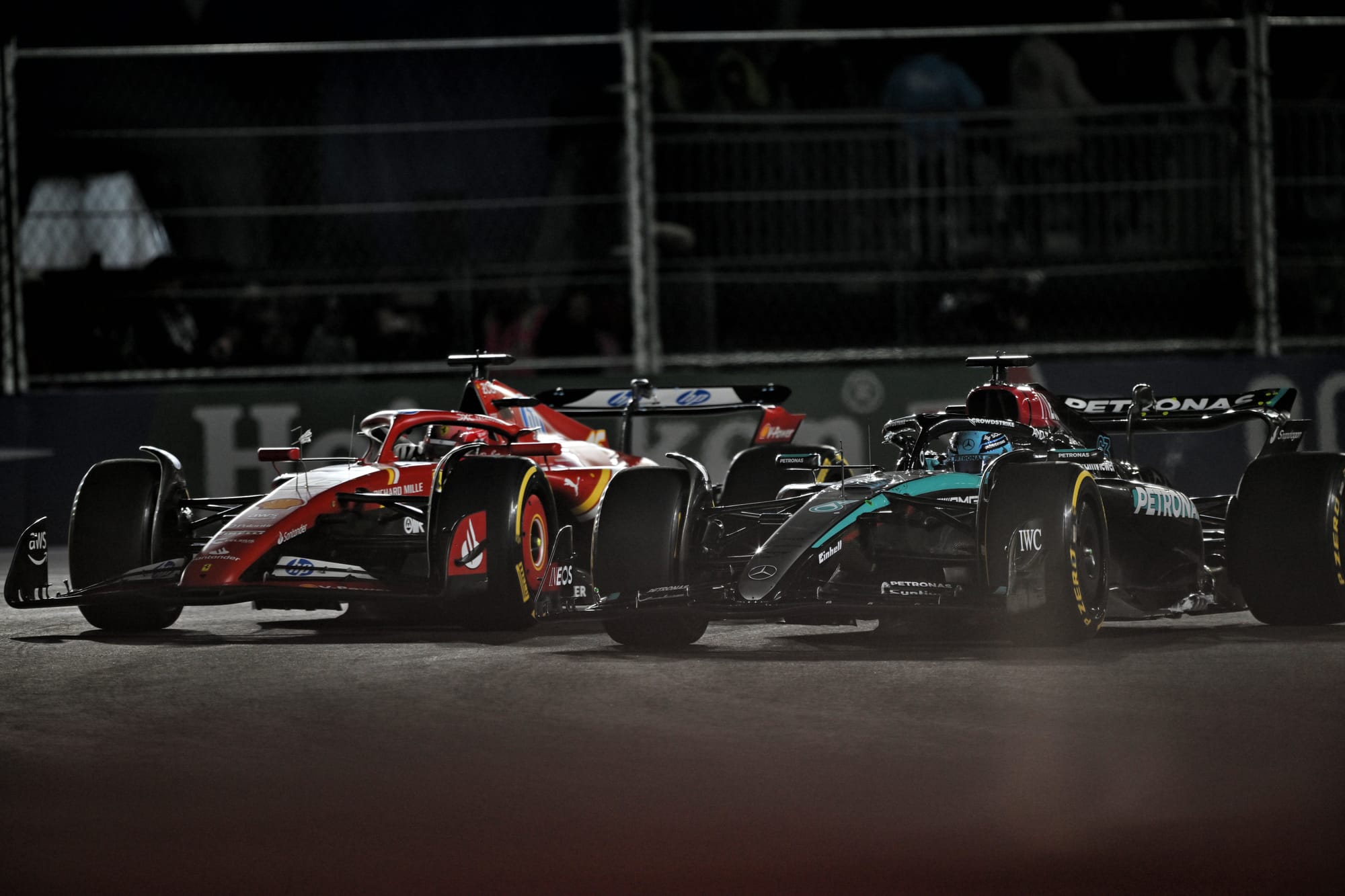
He went for the move on lap four, around the outside into Turn 14. But Russell was supremely gritty and committed in his response, holding the Ferrari out there, then through the final turn (flat out in eighth gear, 198mph, knowing the Ferrari was there somewhere but unable to see it), and finally through the tight first turn, giving Leclerc just enough racing room on the outside but still closing the door. That was absolutely decisive. Because that was the Ferrari challenge over and Russell was now free.
Pushing like that had damaged Leclerc’s right front. Engineer Bryan Bozzi was already concerned about the temperatures. Leclerc insisted it would recover. It did so only briefly before dropping off suddenly, the stripe of graining on the outer edge already visible. Just as the following Sainz was reporting that “Charles is struggling,” Leclerc was saying, “If Carlos can pass me, he can,” (a gesture he later came to regret).
Sainz passed on lap seven, by which time Russell was already just managing his tyres, 2.6s ahead and building by big chunks each lap, as Sainz too found his right-front giving up and Russell did not.
Verstappen by this time, having found a way by Gasly’s fast-on-the-straight Alpine for fourth was lapping around 0.5s slower than Russell. The fronts wanted to lock, but he was reluctant to move the brake balance rearward because he had so little rear grip.
He didn’t allow himself to rage against that, just concentrated on accomplishing his mission. That was to simply finish ahead of Norris who had eventually got by Gasly too (before the Alpine blew up its motor) but didn’t have the pace even to threaten the compromised Red Bull.
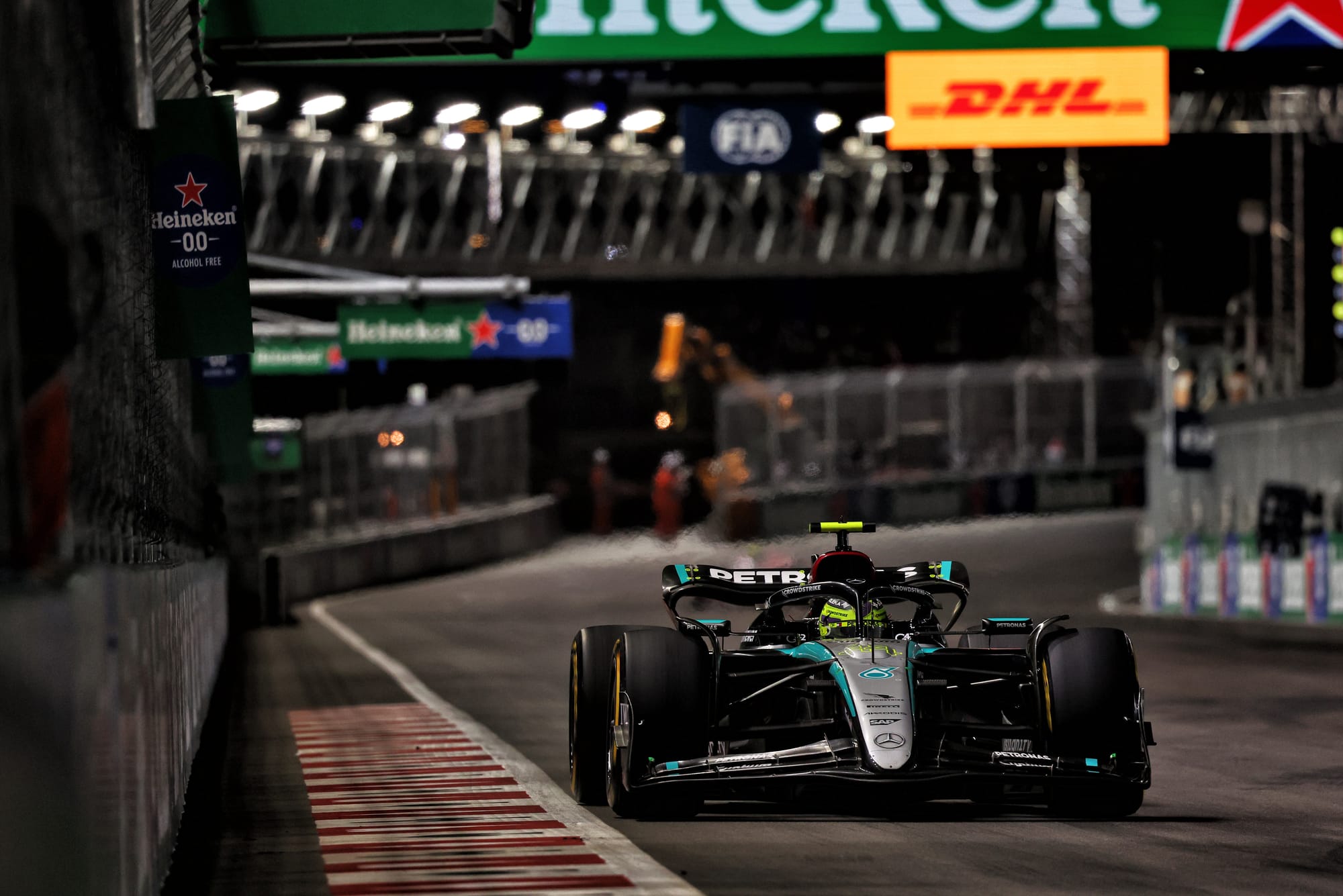
Hamilton, once he’d carefully picked his way by the slower cars of Nico Hulkenberg, Oscar Piastri and Yuki Tsunoda was quickly closing on Verstappen, who pitted before Hamilton got to him, a lap after he’d just passed the tyre struggling Leclerc, who pitted a lap later. Leclerc was followed in by Sainz, who remained ahead.
Both Ferrari drivers were asking to come in sooner but the team was reluctant, as they’d not been going long enough to have built up a gap to drop into. “If we do it, you’ll come out last,” Leclerc was advised.
That was true in that moment, but the race’s tide was turning fast and that was no longer the imperative. The drivers were right in this case. It was more important to get off the badly graining medium and onto the hards – because almost everyone else was going to be pitting soon too.
Stopping a lap later than Sainz vaulted Verstappen past both Ferraris, which had lost time in traffic.
Hamilton’s stop on the 13th lap completed the leading contenders’ moves from medium to hard. It left Russell leading by 10s and pulling away from the closely-packed Verstappen, Sainz, Leclerc and Hamilton.
“The race was won in stint one,” Russell confirmed. “I had the gap, we had the pace and so I was able to just go into management.” He took particular care not to hustle the car through Turns 10 and 11.
“If he’d needed to, George could’ve gone 2s quicker at that stage,” claimed Toto Wolff. The Mercedes really were in a different league to the others here.
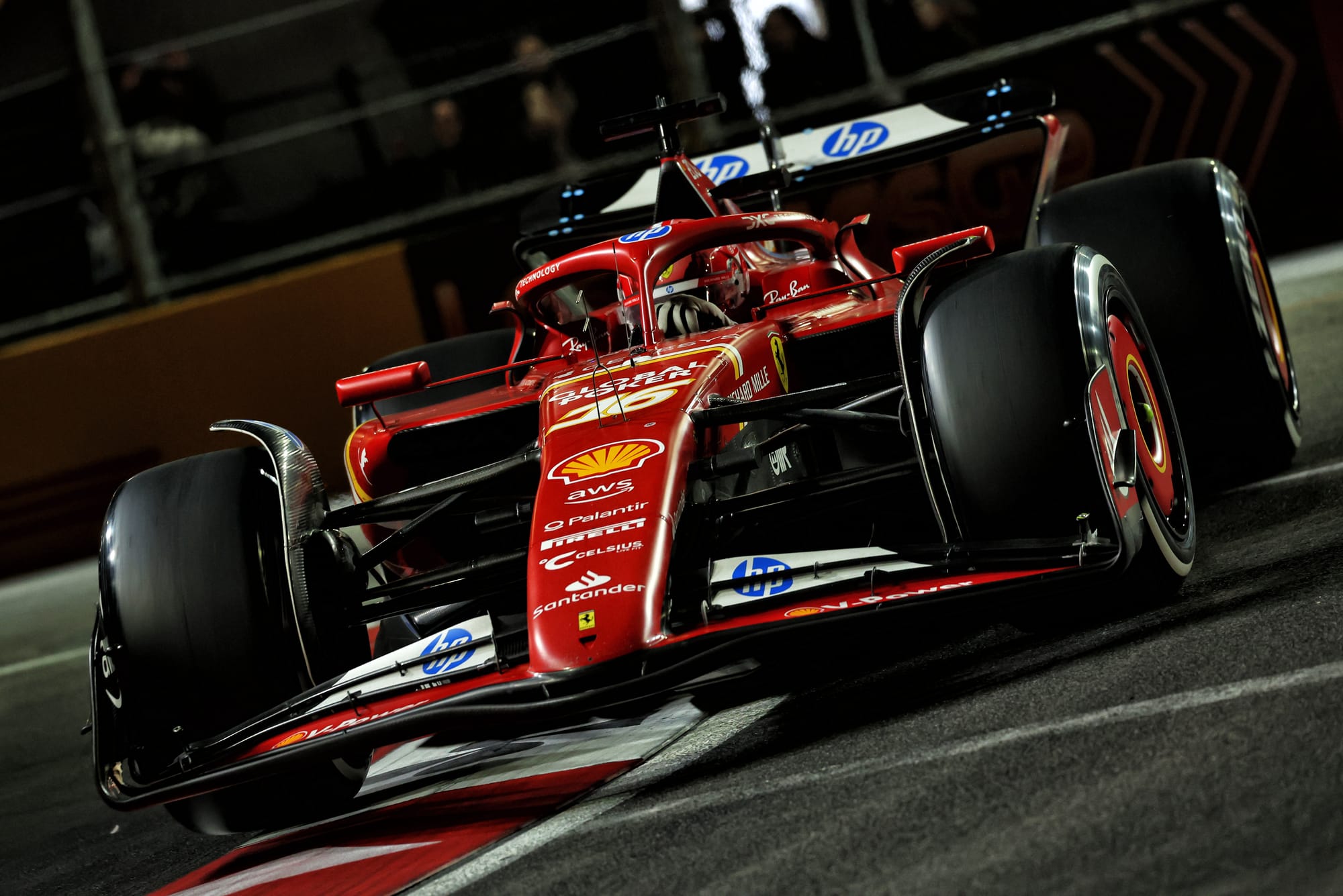
The switch to hards had been earlier than everyone had expected – but partly triggered by how hard the Ferraris had pushed so early. “Several drivers chose to push hard right from the start,” observed Pirelli’s Mario Isola, “without giving too much thought to tyre management.
"As a consequence, some of them suffered more than expected with graining, which triggered a chain reaction and pushed everyone towards a two stop, especially as they knew they could count on two sets of hard tyres, which was without a doubt the most competitive compound for the race.”
It wasn’t certain yet that the hards couldn’t do the remaining distance. No one had tried them in practice. After the race, Mercedes was adamant it could have comfortably got Russell through to the end on his set and he could’ve won it like he had at Spa or like Leclerc had at Monza. Instead, it covered what everyone else did, just in case of a safety car.
Further back, Fernando Alonso had started his Aston Martin on the soft, had pitted onto the hard after four laps, but they were finished 20 laps later and he pitted again. This was the confirmation that the hard wasn’t immune from graining either, something soon being confirmed by the leading pack.
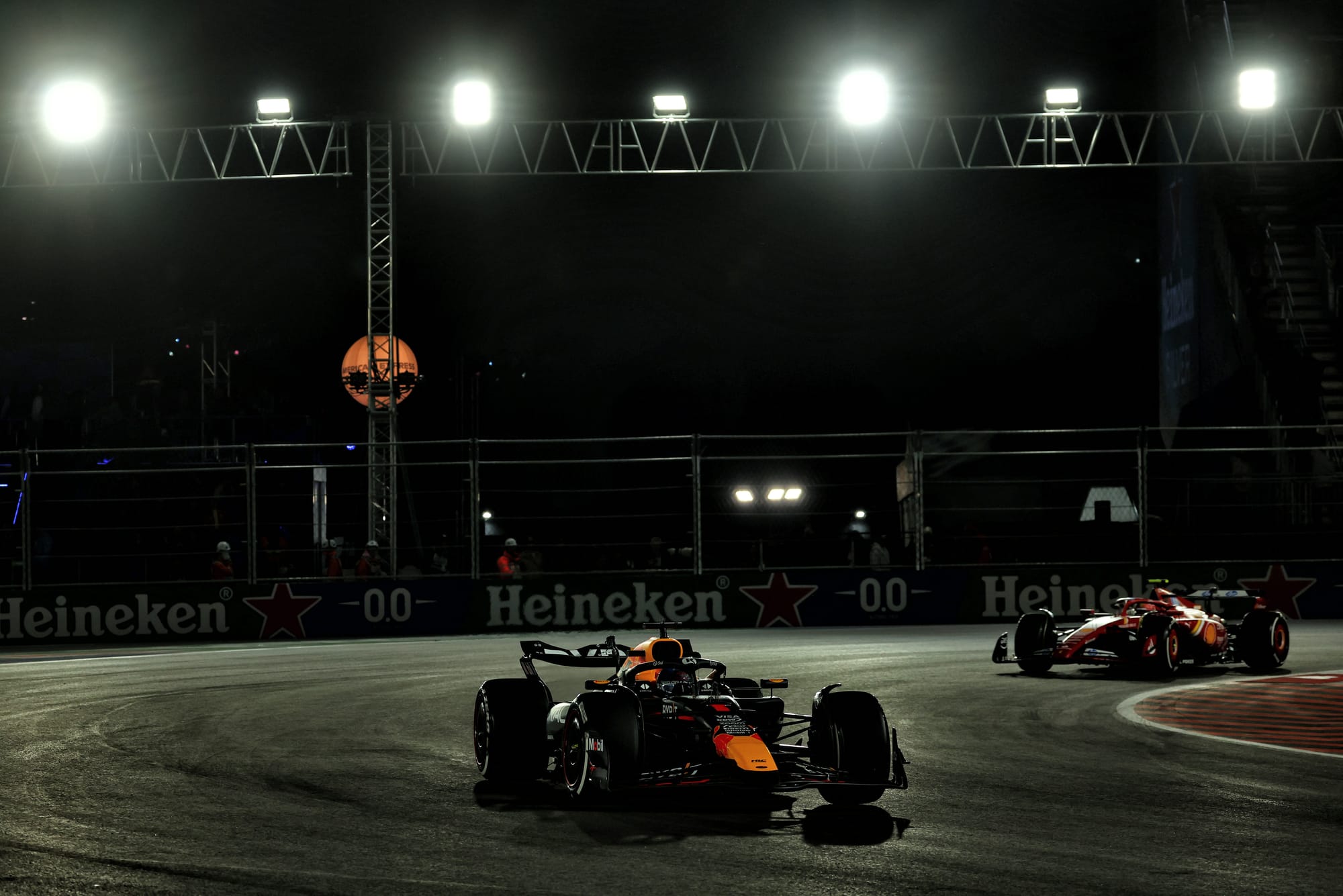
Verstappen and Sainz were both struggling with their fronts by lap 27, with Leclerc catching them both and Hamilton catching all of them, the four now closely-bunched. Sainz had been almost begging Ferrari to bring him in since two laps earlier, not only to get him out of Leclerc’s way without surrendering a place to him but also feeling he’d easily undercut the Red Bull.
In turn, the Red Bull pitwall, monitoring what Ferrari was going to do, had advised Verstappen to box on lap 26, then immediately cancelled that instruction. Sainz meanwhile was being instructed to let Leclerc through, just as Hamilton was arriving on their tail. He did so into Turn 14 on lap 27, taking care to cut off Hamilton as he did so.
Verstappen and Sainz were each told to box on this lap but as they both trailed in Sainz was told to stay out – and he was forced cross the pitlane line to do so. Curiously, the stewards did not award a penalty.
“What happened guys?” Sainz asked as he set out on a further lap on his gripless old tyres and set to lose a place to Hamilton, who had pitted. “We weren’t ready for you,” came the reply. “Come on guys, wake up!” he responded before pitting the next lap.
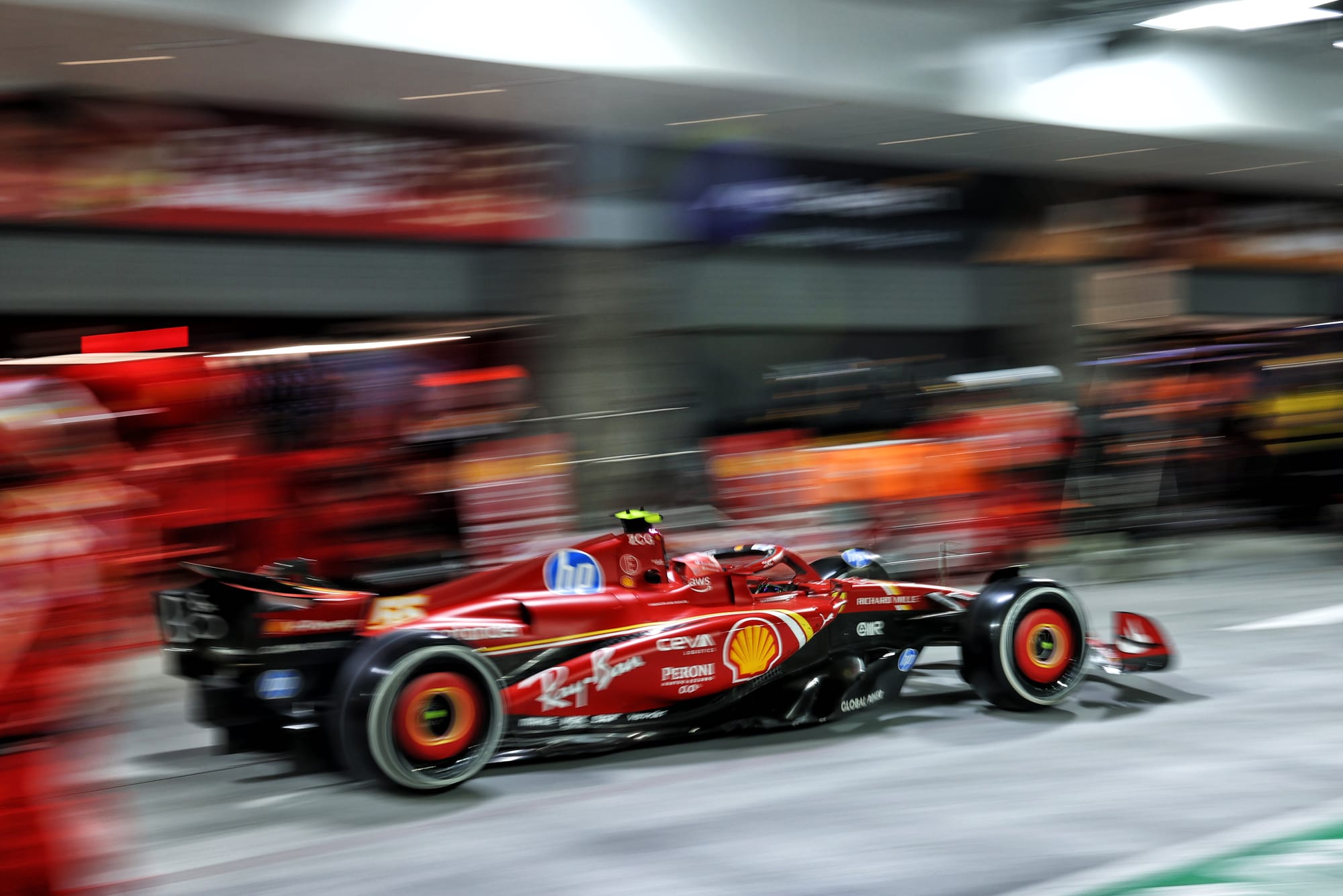
Leclerc stayed out a further three laps and his pace was good enough that he managed to overcut himself ahead of his team-mate. But on cold new hards, he was going to be going much slower than Sainz on fully warmed rubber. “Carlos has been told not to pass,” Leclerc was advised. Sainz, exasperated at the crew not seeming to grasp things as quickly as him, knew that he couldn’t afford to back off for Leclerc as it would lose him valuable time in his chase of Verstappen.
So he surged past his team-mate, which naturally upset Leclerc, given that he'd earlier volunteered position to Sainz… just a niggle triggered by the fast-transitioning strategy of the race.
Verstappen had been powerless to respond as Hamilton closed him down at a great rate. “Don’t lose sight of our aim here,” his engineer Gianpiero Lambiase advised. “Yes, I’m just going to do my race,” Max replied before putting up no resistance to the flying Mercedes.
As Hamilton set off in chase of his team-mate 10s up the road, Verstappen was left under attack by the Ferraris, which on the hard were much faster. Ultimately, he allowed them past too. Given that he was 10s ahead of Norris, there was no point in perhaps destroying his tyres fighting two cars he had no need to beat to take the title.
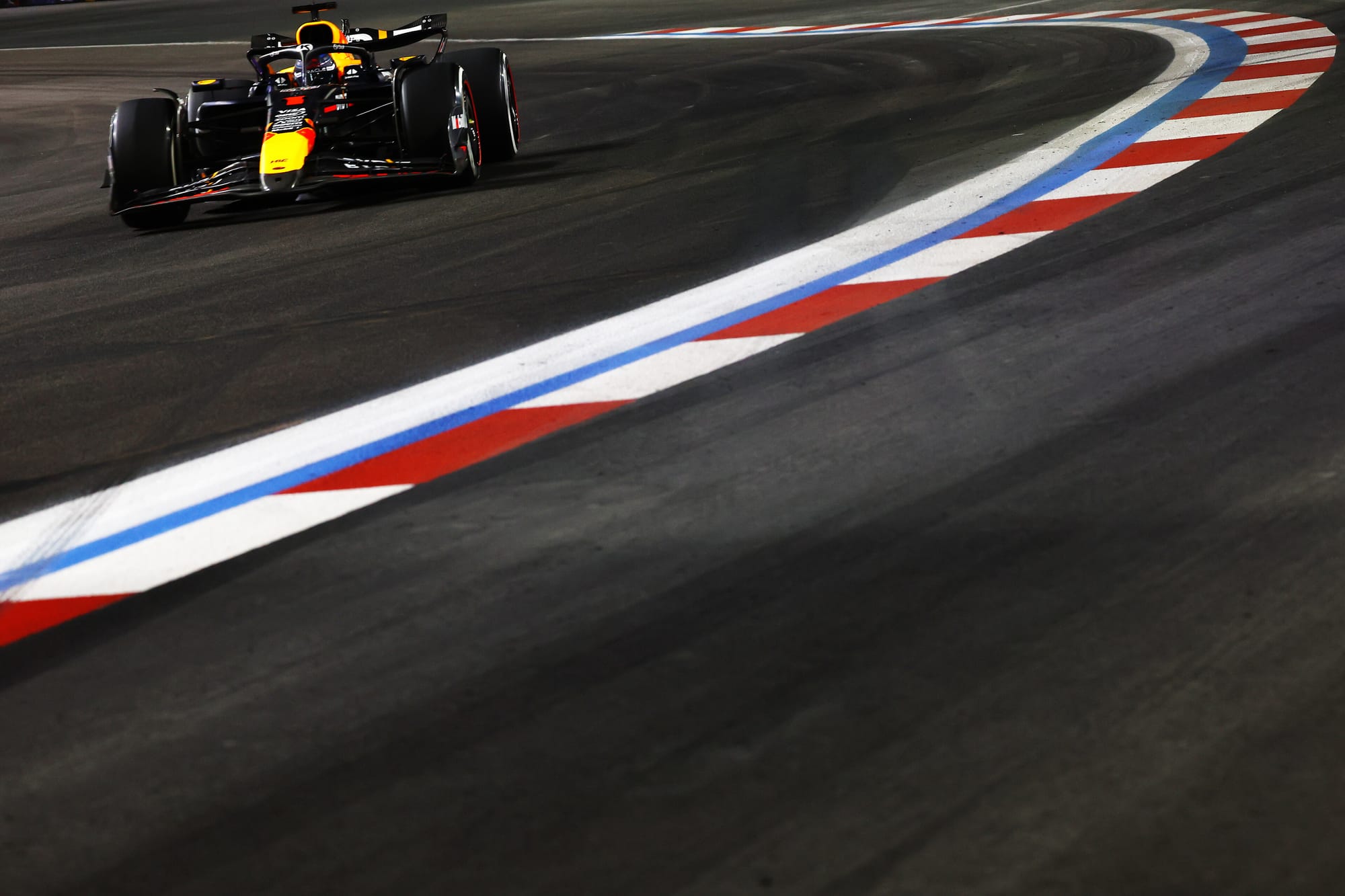
Four laps after Leclerc had passed him, Verstappen crossed the line fifth, not even Norris’ free pitstop for a new set of softs and taking the point for fastest lap being enough to deny Max title number four.
He was 16s behind race winner Russell. Hamilton had set one fastest lap after another as he closed the gap to Russell down to less than 5s but his tyres were finished three laps from the end, as Russell simply controlled the gap.
“If I’d done my job yesterday, this would’ve been a breeze,” reflected Hamilton. Maybe. Russell would probably disagree.
Where did Mercedes' pace come from?
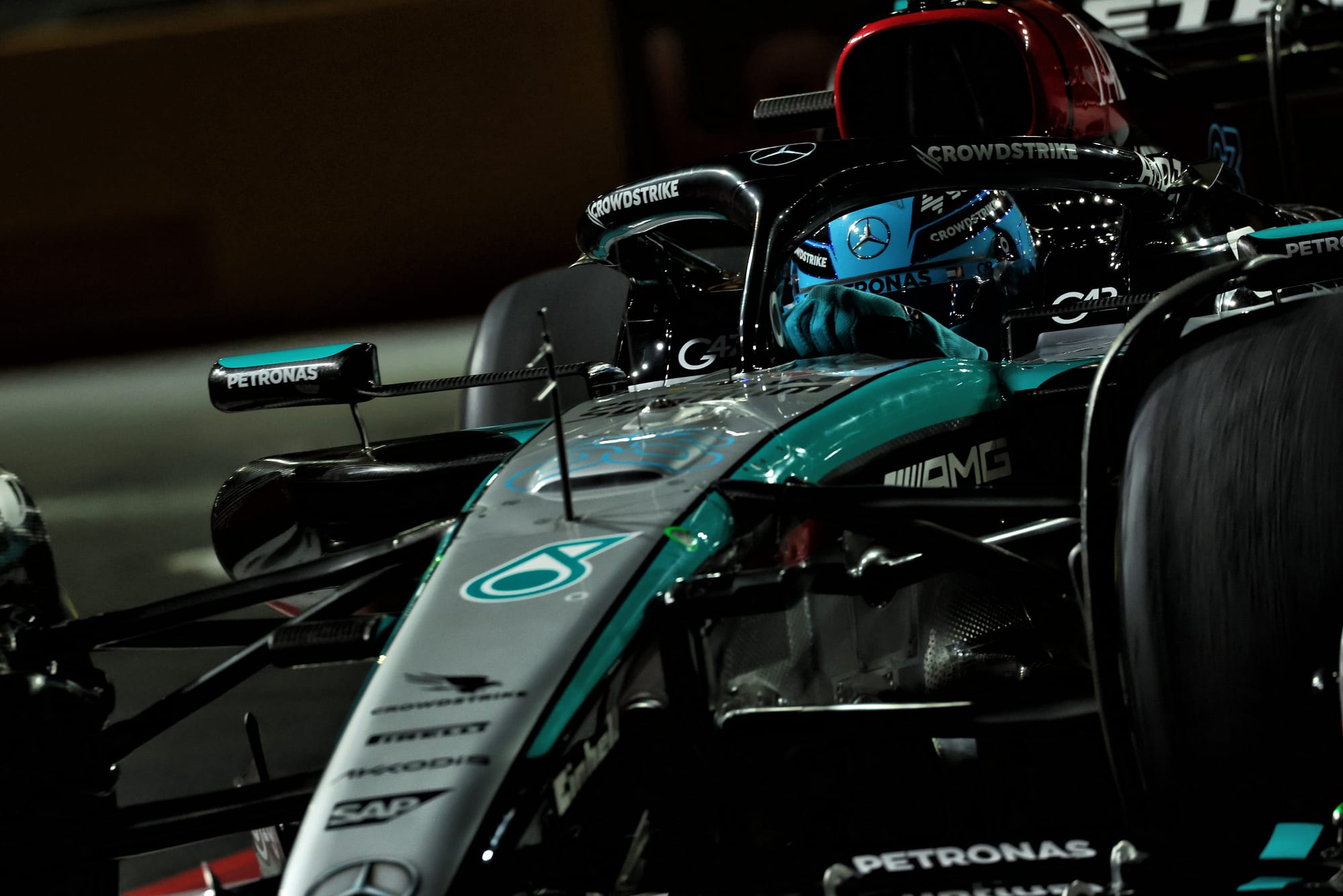
With Sainz and Leclerc taking third and fourth, Ferrari had achieved the best possible result for the pace of its car. But just how had the Mercedes been so much faster?
This weekend, on a gripless, smooth surface, tyre performance was a way more powerful factor than aerodynamics (given that the differences in aero performance between the top cars is relatively small). The Mercedes on a smooth track, where it can run low and stiff, is right into its happy window and at least on par with anything aerodynamically.
On anything with bumps, it needs to be raised into its unhappy place. More importantly, the Mercedes in cool conditions always generates its temperatures quick – and that was decisive in giving Russell pole.
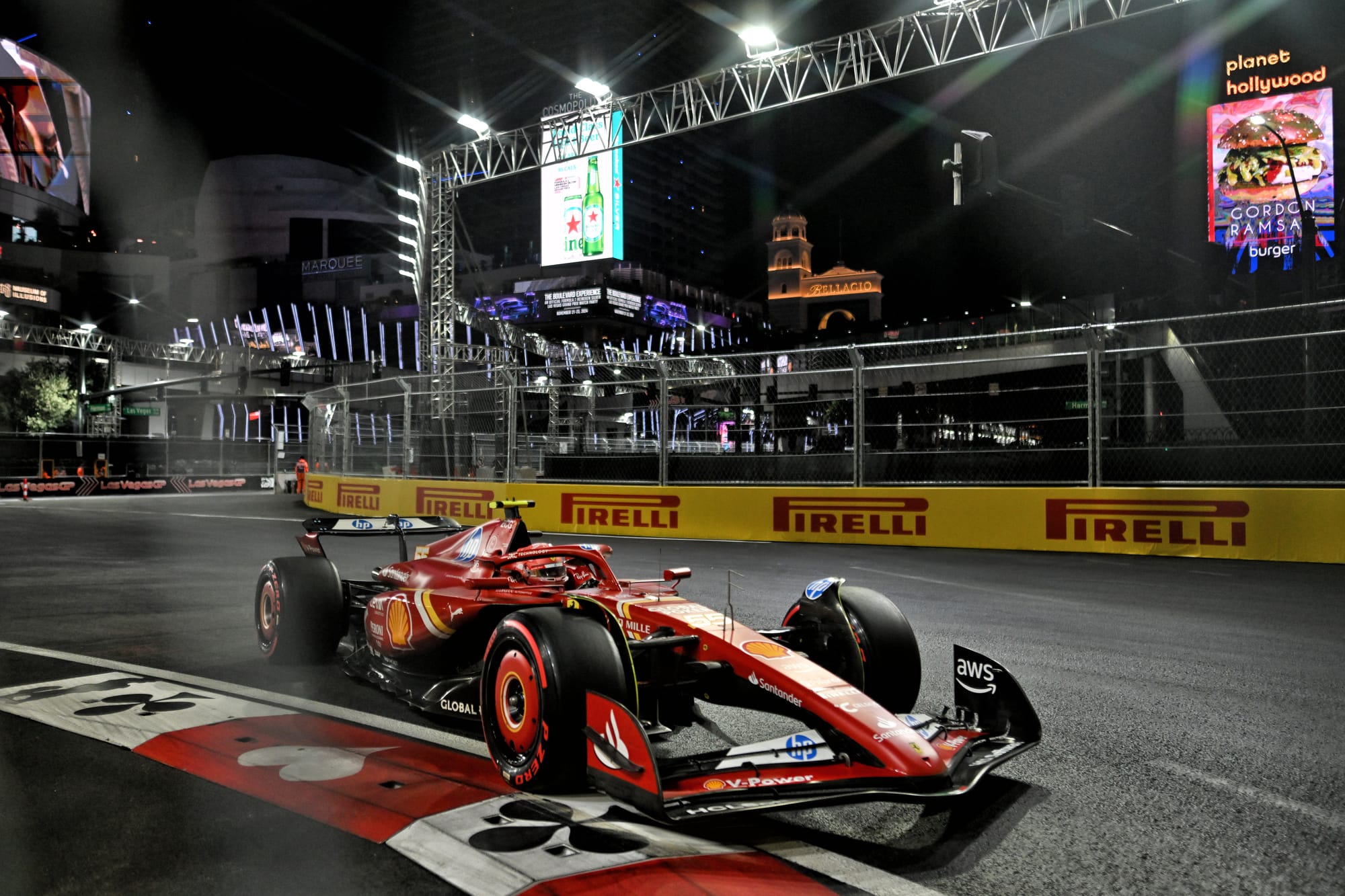
Sainz, with the Ferrari’s tyres not fully warmed at the start of the lap, lost 0.3s to Russell in the first sector but lost out on pole by less than 0.1s. As a car, over one lap, the Ferrari was at least as fast. But with tyre temperature into the equation, it wasn’t.
But what about the Mercedes' way superior race pace? Red Bull explained all about how it has not done a specific Monza-style wing for the last three years and essentially just had to hack pieces off its Spa wing here – which meant it lost a lot of downforce to get acceptably low drag, compared to those cars like Mercedes and Ferrari which had specific Monza wings to use.
But Mercedes’ Monza wing carried significantly more surface area than Ferrari’s. Ferrari had lower drag, Mercedes had more downforce. The difference over a lap was small, but over a race stint, it gave the Mercedes a big tyre advantage. It was a much better-balanced car, had much better traction and could look after its rear tyres better. With more rear wing, a greater balancing front flap could be used – thereby giving more resistance to graining fronts too.
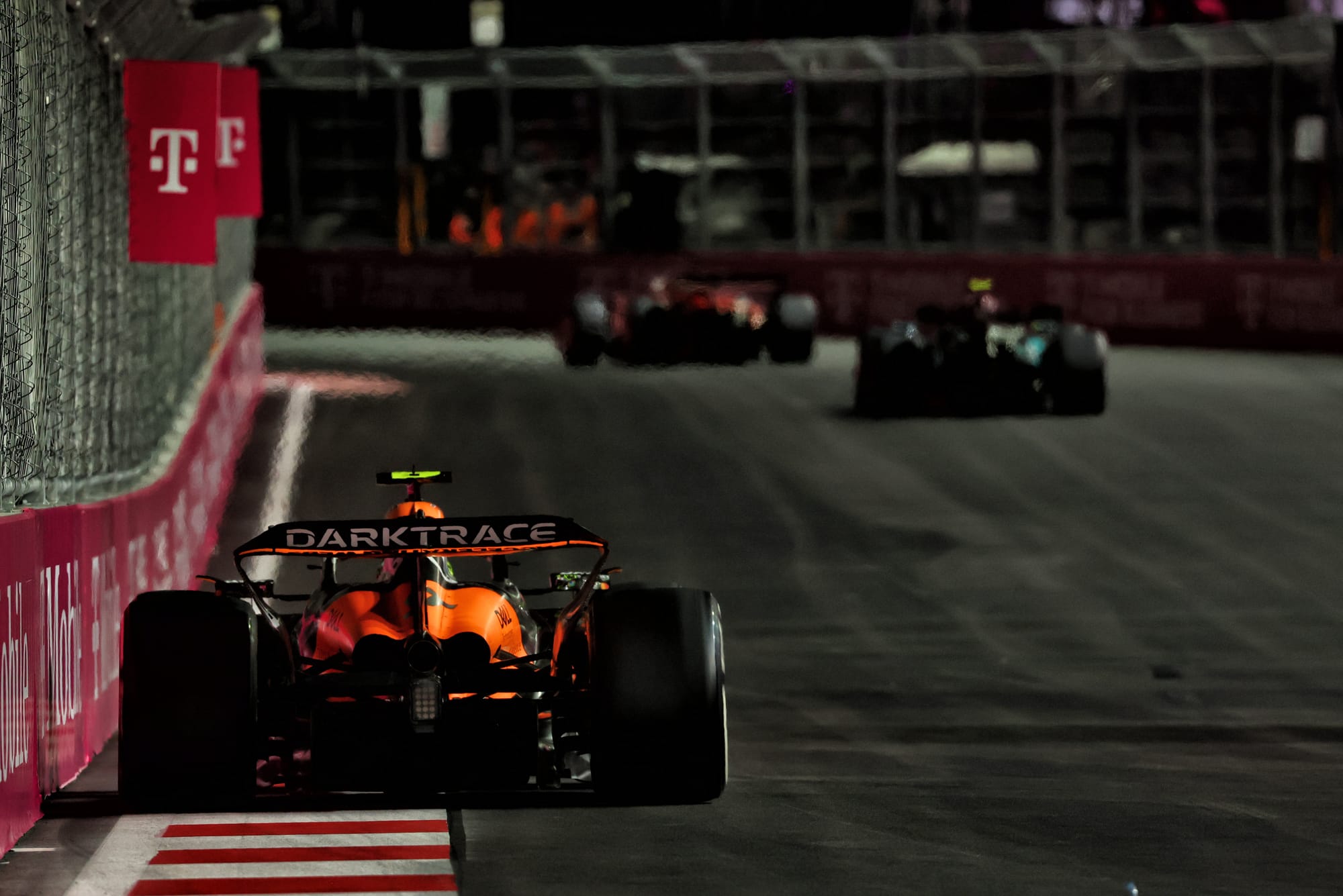
The McLaren is at its least convincing on a low-downforce track and on a cool surface. When those two factors were combined, it left it where it was in Vegas: sixth and seventh with only small glimpses of pace as the tyres occasionally nudged up to the window and not all that far clear of the midfield battle won by Hulkenberg’s Haas over Tsunoda’s RB.
The spread between the top four cars here was untypically large, and untypically conditions heavily favoured Mercedes.

